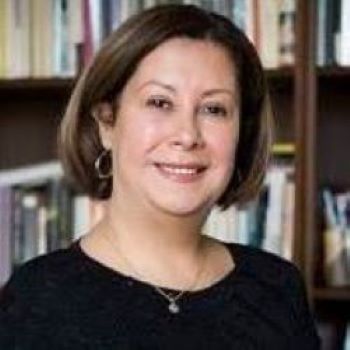Making History Just: The Untold Stories of Italian Immigrants

Madeline Northup
It is the plague of history that the stories of common people, the people who build societies, who run them with no credit or glory, are lost to time. But when those stories are documented through letters or pictures, they can give us a glimpse into those forgotten lives.
Maria Teresa Sanhueza, Associate Professor of Spanish at Wake Forest University, was reading a book in 2013 containing a selection of letters, specifically those sent from Italian immigrants to Argentina. The book, titled One Family, Two Worlds: An Italian Family’s Correspondence Across the Atlantic, 1901-1922, was edited by Franco Ramella and Samuel L. Baily in 1988. Documenting the lives of the Sola family, the letters detailed the costs and benefits of living in Buenos Aires as Italian immigrants. What was missing, though, Teresa found, were the letters of a prominent family matriarch: Ida Sola. Ida was not among those in her family to immigrate to Argentina; instead, she embarked on a journey to New Jersey in the United States, where she met her husband, Eugenio Cerruti, and spent the rest of her days.
With many of the letters referencing Ida, Teresa found it peculiar that they were not included in the collection. Such is another plague of history: the erasure of women, their lives and their contributions. Knowing that Ida’s story deserved recognition, Teresa embarked on a journey to Biella, Italy, where she was able to find one of Ida’s descendants, Dr. Aldo Sola. In his old age, he granted Teresa access to Ida’s remaining letters, giving her a kiss on each cheek in return. One kiss was for what Teresa had done, researching the Sola family. The other was for what she was going to do.
Since then, Teresa has connected with Ida’s descendants all across the United States. They have been instrumental in helping her document the story of their family, bringing the contributions of a remarkable woman to light. Teresa herself is not an Italianist; her specialty lies in Latin American Theater Studies. Yet, having found that theater is embedded is in the history of immigration in Argentina, she became more interested in immigration studies, and, with access to the letters, the Italian language. Her perspective as a humanities scholar and professor, as well as an immigrant herself from Chile, has given her the unique opportunity to see the letters from both a personal point of view, and an external one.
Encouraged by her success in documenting the Sola story, Teresa didn’t stop there. Through historian Daniel Imfeld, she found the Racca family of Argentina, whose letters trace their migration from Volvera, in Italy’s Piedmont region, to Santa Fe. Rich in detail, the correspondence, especially from Lucia Grandi de Racca, offers a rare female perspective on immigration, revealing the emotional and practical challenges of building a new life while preserving ties to Italy. Through further research on various social media platforms, she discovered the Foti family of Messina, Sicily, whose patriarch, Salvatore, was recruited as a musician by the United States Navy and migrated to Brooklyn, New York in the early 20th century. Finally, she also traced the journey of the Caruso family, whose migration story stands out for its transnational scope: before ultimately settling in Buenos Aires, they first sought new lives in New York and New Jersey, navigating the challenges of two very different American destinations.

Overall, Teresa’s passion for telling the stories of seemingly unknown individuals has led her to uncover and document the histories of four immigrant families in depth. Letters, as intimate personal documents, reveal the heartache and hardship that many of these immigrants would have experiences during their lives. Accessing this material has been made possible through the generosity of descendants, many of whom she now considers close friends.
With between four and five hundred letters from the four families in her possession, Teresa hopes to publish a book detailing the female immigrant perspective and the perspective of those who stay behind, as this is commonly ignored in immigration studies. She also hopes to continue to provide avenues for combining academic research and storytelling.
These personal accounts challenge monolithic explanations and highlight the complexity behind every journey toward a new life. “The official history is neither fair nor accurate,” Teresa said to me as we finished up our interview. Her words, echoed through the stories she shared, reveal that while Italian immigration followed certain broad patterns, the decision to emigrate was ultimately shaped by deeply personal factors. Beneath the generalized narrative of mass migration lies a rich tapestry of individual stories shaped by each family’s economic circumstances, the immigration policies of the receiving countries, the specific conditions of both their places of origin and arrival, the gender of the migrants, and the particular dynamics within each household. They help build a more comprehensive, grassroots narrative, one that brings to light the overlooked names and stories of ordinary individuals who lived extraordinary lives and whose experiences deserve recognition and appreciation. Through these letters, we gain access to the emotional and practical dimensions of migration that broader historical overviews often obscure.
If you or others you know are in possession of family letters and are interested in having them researched and documented, please reach out to Maria Teresa Sanhueza at sanhuemt@wfu.edu. All letters are in the process of being digitally compiled on a website titled Voices of Italian Immigrants: A Journey of Discovery. The link can be found here or on the Italian American Collective website under “Featured Resources.”